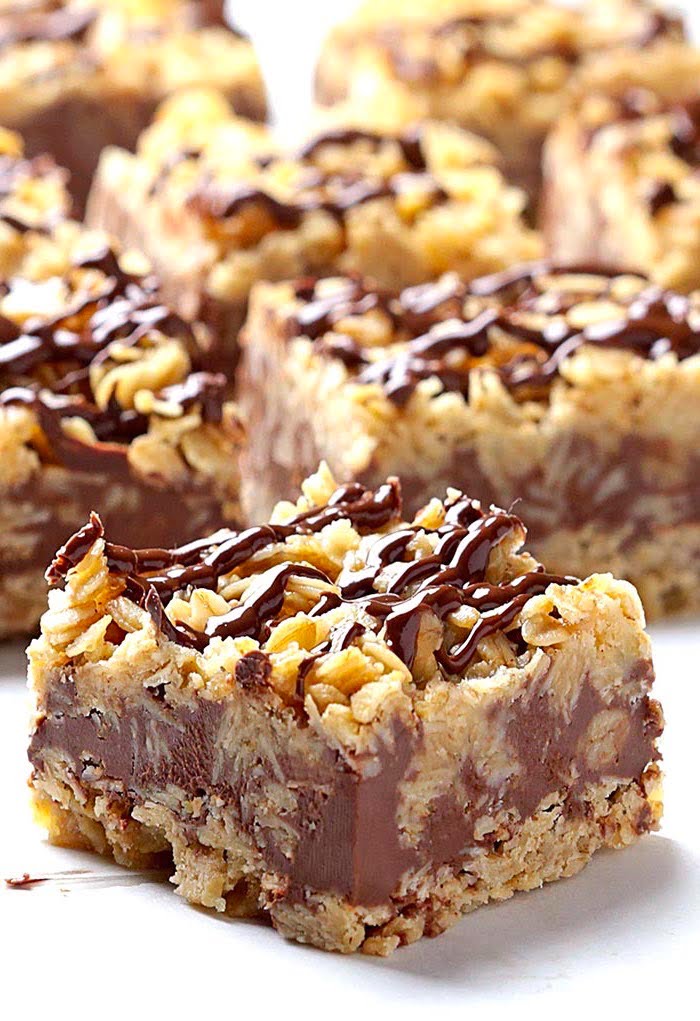
Craving some chocolaty and/or peanutty deliciousness, but so not in the mood to slave over a hot oven? It’s a common conundrum. The perfect answer ? My No-Bake Chocolate Oatmeal Bars!
No-bake Chocolate Oatmeal Cookies and I have a bit of a special relationship. I love how easy they are to make, and how rich the chocolate and…. >>Read More
Seafood and fish with more vitamin D
Vitamin D is one of the most important for our body, since the absorption of calcium depends on it, a basic function to maintain the health of the bones and skeleton. In addition, it prevents childhood rickets and osteoporosis in adults.
The main source of vitamin D is the sun, so it is advisable to take it in small doses and always with adequate protection. It can also be obtained through supplements, but it is the least recommended unless the doctor recommends it in specific cases.
Some foods are also rich in vitamin D, so incorporating them into our diet can be interesting to reinforce the contribution of this nutrient to our body. Among the foods with the highest contribution of vitamin D, shellfish and fish stand out.
Next, we review the main types of seafood and fish that contain the most vitamin D.
Seafood
Seafood may seem like a food to consume on special or even luxurious occasions, but the truth is that it is the main source of vitamin D through diet. Among shellfish, oysters provide the most vitamin D, followed by prawns, prawns, clams, cockles and others. In this list you can check the approximate proportion of vitamin D of each type of shellfish
Oysters: provides 0.54 ug. per 100 grams
Red prawn: 100 grams provide 0.01 ug. of vitamin D.
Prawns: provides a quantity of vitamin D of 0.01 ug. in every 100 grams.
Clams: 100 grams of this food provide 0.001 ug.
Cockles: The vitamin D intake of 100 grams is 0.001 ug.
Lobster: In every 100 grams there are 0.001 ug. of vitamin D.
Squid: For every 100 grams, up to 0.001 ug can be extracted.
Crab: 100 grams provide 0.001 ug. of vitamin D.
Fish
Some fish contain the same form of vitamin D that is synthesized in the skin, cholecalciferol (vitamin D3).
Trout and salmon. They are sources of omega-3, beneficial for the heart, and a source of vitamin D. Specifically, 100 g of trout provide 15.9 micrograms of vitamin D. Fresh salmon contains 10.9 μg per 100 g, and smoked salmon 17.1 μg per 100 gr and canned salmon 15 μg per 100 gr.
Swordfish. Provides 13.9 μg per 100 g of vitamin D
Mackerel. At 13.8 μg per 100 g, it is another source of vitamin D and omega-3 polyunsaturated fatty acids.
Herring and sardine. They have a similar content of vitamin D, of 4.2 μg in 100 gr for the first, 4.8 μg for the second, in addition to omega-3.
Tuna. In this case, it has a lower amount of vitamin D, 1.7 μg per 100 g in the case of fresh tuna. The vitamin is not lost in canned tuna.

Welcome to Mariasskitchen.com! I’m Maria Tarrant, the proud owner and passionate curator of this website. As an avid lover of all things dessert, baking, and traveling, I’ve combined my passions to create a platform where I can share my culinary adventures and inspirations with you. From decadent cakes to scrumptious cookies, this website is a haven for dessert enthusiasts looking to explore the sweet side of life.
Join me on this delectable journey as I whip up mouthwatering recipes, offer baking tips and tricks, and take you along on my exciting travel escapades, discovering flavors from around the world. MariasSkitchen.com is a place where I pour my heart and soul into each post, hoping to ignite your own culinary passions and create unforgettable memories. So, grab a spoon, pack your bags, and let’s embark on this extraordinary adventure together!